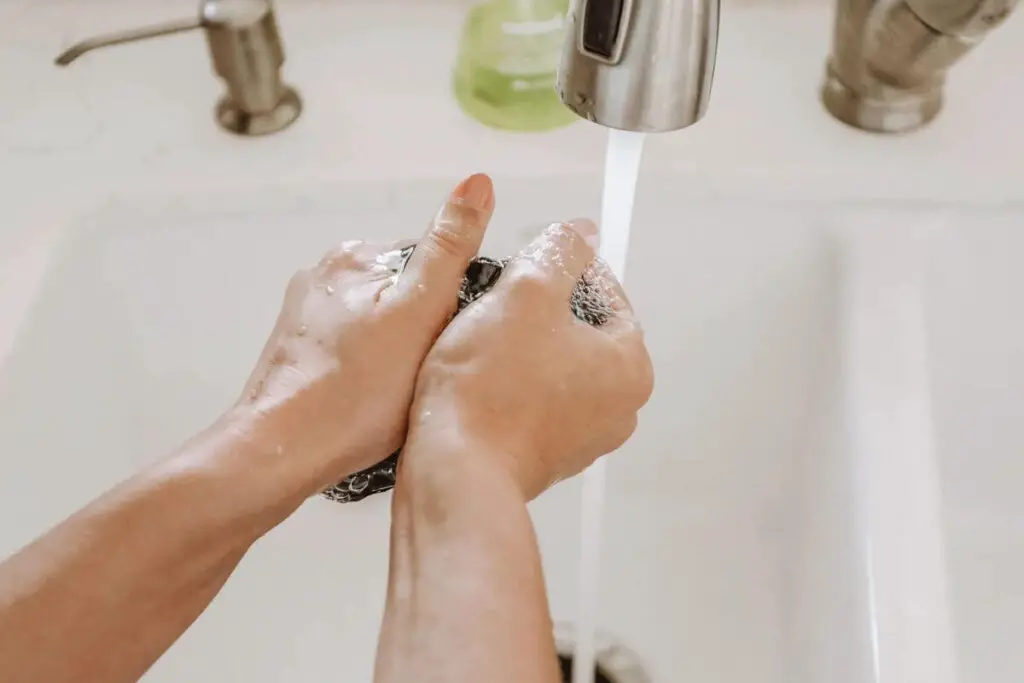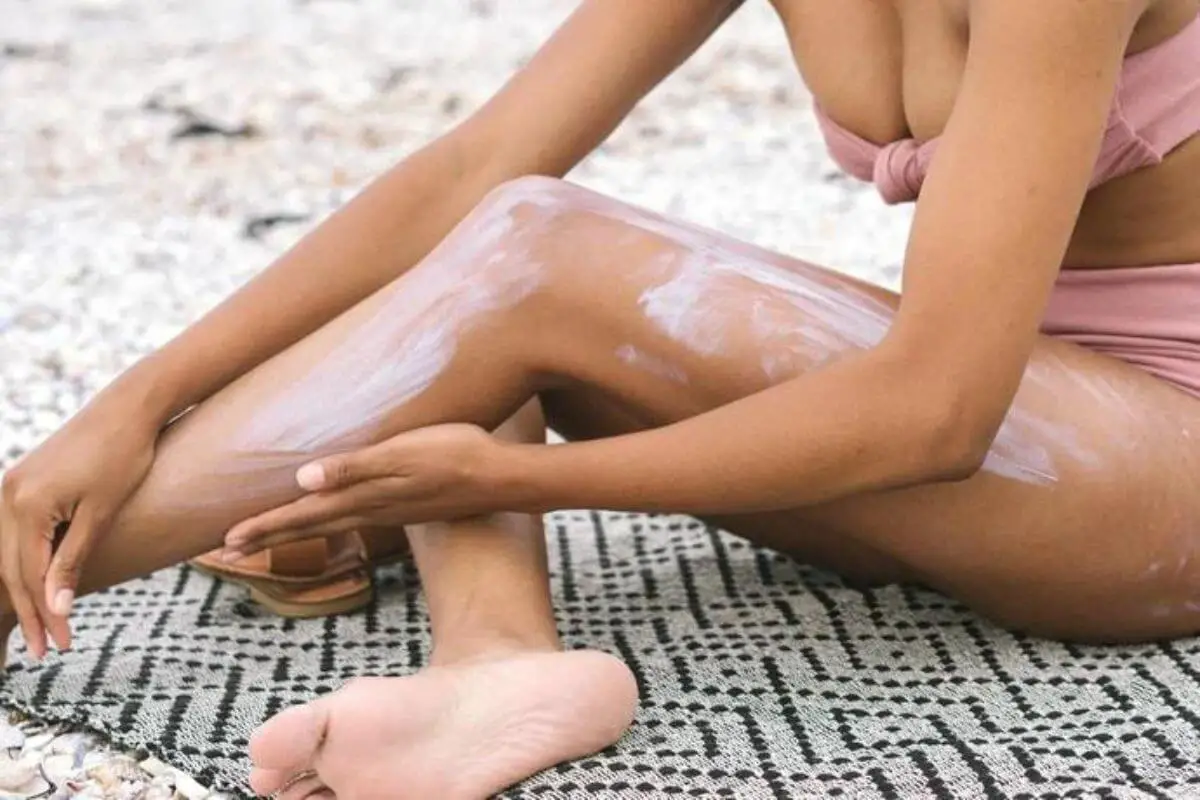A white bathing suit exudes elegance and timeless charm, but over time, it might fall victim to yellowing. The culprits behind this discoloration can range from sunscreen residues and sweat to exposure to chlorine. Fear not! With the right care and cleaning methods, you can restore your white bathing suit to its pristine glory. Let’s dive into a comprehensive guide on how to bid farewell to those stubborn yellow stains and bring back the brilliance of your swimwear.
**1. Immediate Action: Rinse and Rinse Again
a. Quick Rinse After Use:
- Immediately after wearing your white bathing suit, give it a quick rinse under cool, running water. This helps remove any residual chlorine, salt, or sweat that can contribute to discoloration.
b. Hand Rinse in Cold Water:
- For more thorough cleaning, gently hand rinse your bathing suit in cold water. Avoid using hot water, as it can set stains and damage delicate fabrics.

**2. Pre-Treatment Precautions: Say No to Sunscreen Stains
a. Sunscreen Application Timing:
- Apply sunscreen at least 15 minutes before putting on your bathing suit. Allowing it to fully absorb can reduce the likelihood of sunscreen transferring onto the fabric.
b. Avoid Spray Sunscreens:
- Opt for lotion-based sunscreens instead of spray formulas. Spray sunscreens may contain ingredients that are more prone to staining fabrics.
**3. Gentle Hand Washing: The Golden Rule of Swimwear Care
a. Mild Detergent Soak:
- Fill a basin with cold water and add a small amount of mild detergent specifically designed for delicates. Avoid harsh detergents that can damage the fabric.
b. Submerge and Soak:
- Submerge the bathing suit in the soapy water and let it soak for 15-30 minutes. Gently agitate the water to encourage the detergent to penetrate the fabric.
**4. Patience Pays Off: Delicate Stain Removal Techniques
a. Lemon Juice Magic:
- For yellowing caused by sweat or deodorant, mix equal parts lemon juice and water. Apply the mixture to the affected areas and let it sit for 10-15 minutes before rinsing.
b. Baking Soda Boost:
- Create a paste using baking soda and water. Gently rub the paste onto the yellowed areas, allowing it to sit for 15-20 minutes. Rinse thoroughly to remove the paste.
**5. Machine Washing Woes: Cautionary Steps
a. Use a Mesh Bag:
- If machine washing is necessary, place the bathing suit in a mesh laundry bag to protect it from rubbing against other items in the machine.
b. Delicate Cycle:
- Select the delicate or hand wash cycle on your washing machine. Use cold water and a small amount of mild detergent to prevent damage to the delicate fabric.
**6. Avoiding the Heat: Say No to Dryers and Direct Sunlight
a. Air Dry Only:
- Skip the dryer and let your bathing suit air dry. Lay it flat on a clean, dry towel to maintain its shape and prevent stretching.
b. Shade the Sun:
- Avoid direct sunlight during the drying process, as prolonged exposure can contribute to yellowing. Choose a shaded area for the best results.
**7. Storage Secrets: Shielding Your Suit Between Swims
a. Breathable Storage:
- Store your white bathing suit in a breathable bag or pouch when not in use. Avoid sealing it in plastic, as this can trap moisture and promote yellowing.
b. Separate from Dark Colors:
- When packing for a beach day or vacation, keep your white bathing suit separate from dark-colored clothing to prevent color transfer.
Conclusion: Radiant Revival of Your White Swimwear
By following these meticulous steps, you can bid farewell to the yellowing blues and welcome back the brilliance of your white bathing suit. Regular care and attention to detail will not only preserve the pristine appearance of your swimwear but also extend its lifespan, allowing you to flaunt your elegant beach style with confidence. Dive into the crystal-clear waters knowing that your white bathing suit will shine as brightly as the sun itself.
8. Specialty Solutions: Extra Care for Stubborn Stains
a. Vinegar Soak:
- For persistent stains, consider a vinegar soak. Mix equal parts white vinegar and cold water, then soak the bathing suit for 30 minutes. Vinegar helps break down minerals and residues.
b. Oxygen-Based Cleaners:
- Oxygen-based cleaners are gentle yet effective for stain removal. Follow the product instructions, and pre-treat stubborn stains before regular washing.
9. Expert Advice: Professional Cleaning Tips
a. Consult a Professional Cleaner:
- If all else fails, consult a professional cleaner experienced in handling delicate fabrics. They can assess the damage and use specialized techniques for optimal results.
b. Fabric-Specific Care:
- Some white bathing suits may have specific care instructions based on the fabric. Check the manufacturer’s recommendations for tailored care.
10. Preventive Measures: Shielding Your Suit from Future Yellowing
a. Rinse Immediately After Use:
- Promptly rinse your bathing suit after each use, especially after exposure to chlorinated or saltwater. This helps prevent the buildup of substances that contribute to yellowing.
b. Rotate Your Swimsuits:
- Avoid overusing the same white bathing suit by rotating it with other swimsuits. This minimizes wear and tear on any single piece.
11. Environmental Factors: Understanding the Impact
a. Chlorine Exposure Awareness:
- Be mindful of chlorine exposure in pools. Rinse your bathing suit thoroughly after swimming in chlorinated water to mitigate the effects of chlorine on the fabric.
b. Sunscreen Application Techniques:
- Apply sunscreen carefully to avoid direct contact with your bathing suit. Allow the sunscreen to fully absorb before putting on your swimsuit.
12. Embrace Color-Friendly Solutions: White Enhancing Tips
a. Whitening Laundry Boosters:
- Incorporate whitening laundry boosters into your wash routine occasionally to maintain the brightness of your white bathing suit. Follow product instructions for usage.
b. Lemon Fresh Finale:
- After each wash, give your white bathing suit a final rinse with water infused with a squeeze of fresh lemon. Lemon acts as a natural brightening agent.
13. Fabric-Friendly Drying Techniques: Guarding Against Stretching
a. Flat Drying Technique:
- Lay your bathing suit flat on a clean, dry towel for gentle drying. Avoid hanging it, as this can stretch the fabric and alter its shape.
b. Blot, Don’t Wring:
- When removing excess water after rinsing, gently blot the bathing suit with a towel. Avoid wringing, as this can stress the fabric fibers.
14. Seasonal Storage Wisdom: Preserving Your Suit’s Brilliance
a. Off-Season Care:
- During the off-season, ensure your white bathing suit is thoroughly clean and dry before storing it. Follow the storage tips mentioned earlier to maintain its pristine condition.
b. Inspect Before Wearing:
- Before each season, inspect your white bathing suit for any signs of yellowing or damage. Address any issues promptly to enjoy a full season of dazzling beach style.
Conclusion: Sustained Brilliance, Endless Elegance
With these extra steps and preventive measures, your white bathing suit is not only rescued from yellowing but also fortified against future challenges. Embrace these tips as part of your swimwear care routine, and you’ll revel in the enduring brilliance of your elegant white swim attire. Whether lounging by the pool or strolling along sandy shores, radiate confidence in your flawlessly maintained white bathing suit, showcasing timeless style and enduring elegance.
FAQs
Certainly! Here are some frequently asked questions (FAQs) related to cleaning a white bathing suit that turns yellow:
Q: Why does my white bathing suit turn yellow?
A: Several factors contribute to yellowing, including sunscreen residues, sweat, exposure to chlorine, and environmental elements. Proper care and cleaning can help address and prevent yellowing.
Q: Can I use regular bleach to whiten my bathing suit?
A: It’s not recommended to use regular bleach, as it can damage delicate fabrics. Opt for gentler alternatives like oxygen-based cleaners or vinegar soaks to preserve the integrity of your bathing suit.
Q: How often should I clean my white bathing suit to prevent yellowing?
A: Rinse your bathing suit immediately after each use, especially after exposure to chlorinated or saltwater. Regular hand washing with mild detergent is recommended, and more thorough cleaning can be done as needed.
Q: Can I machine wash my white bathing suit?
A: While machine washing is possible, it’s best to use a mesh bag, choose the delicate cycle with cold water, and avoid using harsh detergents. Hand washing is generally gentler on delicate fabrics.
Q: Will lemon juice bleach my white bathing suit?
A: Lemon juice can act as a natural brightening agent, but it’s not a bleach. It can help reduce yellowing caused by sweat or deodorant. Always rinse thoroughly after applying lemon juice.
Q: How do I remove sunscreen stains from my white bathing suit?
A: To prevent sunscreen stains, apply sunscreen at least 15 minutes before wearing your bathing suit. For existing stains, use a mixture of lemon juice and water or a paste of baking soda and water before washing.
Q: Can I air dry my white bathing suit in the sun?
A: It’s best to avoid prolonged exposure to direct sunlight during the drying process, as it can contribute to yellowing. Choose a shaded area for air drying to protect the fabric.
Q: Should I use fabric softener when washing my white bathing suit?
A: It’s advisable to skip fabric softeners, as they can leave residues that may contribute to yellowing. Stick to mild detergents designed for delicates.
Q: How do I store my white bathing suit to prevent yellowing during off-seasons?
A: Store your white bathing suit in a breathable bag or pouch, and ensure it is completely dry before storage. Avoid sealing it in plastic, as trapped moisture can lead to yellowing.
Q: What should I do if my white bathing suit remains yellow after cleaning?
A: For persistent stains, consider consulting a professional cleaner experienced with delicate fabrics. They can assess the situation and use specialized techniques for optimal results.
These FAQs provide insights into various aspects of cleaning and maintaining a white bathing suit, offering practical tips for preventing and addressing yellowing issues.



